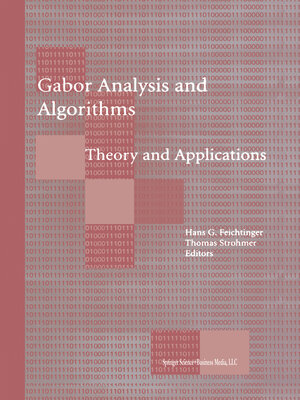Gabor Analysis and Algorithms
ebook ∣ Theory and Applications · Applied and Numerical Harmonic Analysis
By Hans G. Feichtinger

Sign up to save your library
With an OverDrive account, you can save your favorite libraries for at-a-glance information about availability. Find out more about OverDrive accounts.
Find this title in Libby, the library reading app by OverDrive.



Search for a digital library with this title
Title found at these libraries:
| Library Name | Distance |
|---|---|
| Loading... |
In his paper Theory of Communication [Gab46], D. Gabor proposed the use of a family of functions obtained from one Gaussian by time-and frequency shifts. Each of these is well concentrated in time and frequency; together they are meant to constitute a complete collection of building blocks into which more complicated time-depending functions can be decomposed. The application to communication proposed by Gabor was to send the coeffi cients of the decomposition into this family of a signal, rather than the signal itself. This remained a proposal-as far as I know there were no seri ous attempts to implement it for communication purposes in practice, and in fact, at the critical time-frequency density proposed originally, there is a mathematical obstruction; as was understood later, the family of shifted and modulated Gaussians spans the space of square integrable functions [BBGK71, Per71] (it even has one function to spare [BGZ75] . . . ) but it does not constitute what we now call a frame, leading to numerical insta bilities. The Balian-Low theorem (about which the reader can find more in some of the contributions in this book) and its extensions showed that a similar mishap occurs if the Gaussian is replaced by any other function that is "reasonably" smooth and localized. One is thus led naturally to considering a higher time-frequency density.







